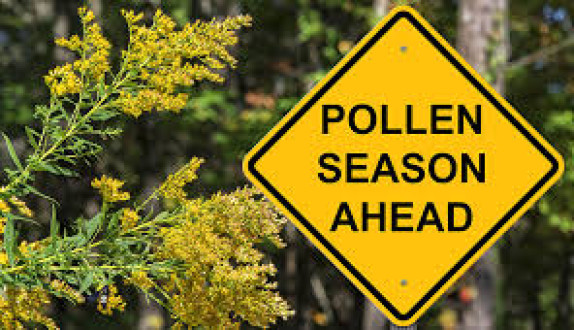
Symptoms of Common Spring Diseases
Most of us recognize spring as the season of allergies. But there is more to it than allergies. Here's a guide to understanding health problems you may have in the spring, how to recognize them, and when to seek advice from your doctor or emergency medical facility.
Spring typically means a return to outdoor activities and longer days, but it is also the best time for allergy-related respiratory illnesses. The reason for the increased allergy flare-ups in the spring is the flowering of trees and plants, and the transport of pollen by the wind reaching our noses, eyes and lungs.
ALLERGY SYMPTOMS
Swelling and mucus production in the nose
Redness, burning and itching in the eyes
Swelling, wheezing, and mucus production in the lungs
Pollen allergies are not life-threatening, they are just a nuisance and seem endless. In addition to pollen allergies, spring brings other health issues that need attention.
OTHER SPRING DISEASES
Asthma
Asthma triggers such as pollen, temperature changes, fertilizers, and insect repellents are abundant outdoors in the spring. Indoor triggers such as dust, mold, and cleaning chemicals can also be responsible for asthma. Asthma is a chronic respiratory condition. It can be life-threatening. Those with asthma should have a ready-made emergency plan in case prescription medications do not eliminate their breathing difficulties.
Rhinovirus
Spring is when the common cold is at its peak. Rhinoviruses that cause about 50% of all colds spread easily. It is important to wash your hands regularly and avoid touching the eyes, nose and mouth.
Flu
Unfortunately, the flu doesn't end with the higher temperatures of spring. In fact, flu viruses live comfortably in moisture. Be careful and continue to wash your hands whenever you have the opportunity, especially while traveling.
Lyme disease
Lyme disease transmitting ticks prefer warmer, wet spring weather. These tiny creatures become active above a certain temperature. Ticks avoidance strategies work best, so avoid walking on tall plants and use a tick repellent when spending time outdoors.
Gastroenteritis
Like rhinoviruses, noroviruses like hot weather. They are highly contagious and although symptoms, including stomach pain, cramping, nausea, diarrhea, and vomiting, usually last only 1-2 days, those affected are usually contagious for 3 days after symptoms resolve.
Proper hand washing and sanitation rules are key to preventing stomach viruses. Keep a disinfectant on hand and keep your family's immune system healthy with nutritious, vitamin-rich meals.
Strep Throat
If you've ever had a sore throat, you know how important prevention is. Carry disinfectant wipes and hand sanitizers with you for extra precaution in public places, as strep throat is easily spread through coughing, sneezing, and touching objects that may contain saliva from an infected person.
Allergic Conjunctivitis (pink or red eyes)
If your child comes home from school with red / pink, watery eyes, you may think he or she has conjunctivitis. To determine if your child has an allergic reaction or infection, you should see a doctor.
Insect Allergies
Most people who are stung or bitten by insects suffer from pain, redness, itching, and minor swelling in the area around the bite or sting. This is a normal reaction. Most people recover within hours or days. People can have a severe allergic reaction to insects that bite or bite. A life-threatening allergic reaction (anaphylaxis) produces signs and symptoms that require immediate medical attention. Without immediate treatment, anaphylaxis can lead to death. Symptoms usually involve the skin or multiple organ systems (part of the body) such as the mouth, lungs, heart, and intestine.
Avoiding Common Spring Term Diseases and Treatment Methods
If you think you are always sick or coughing constantly, we recommend that you see your primary care physician. More than two-thirds of those with spring allergies have symptoms throughout the year. Your best resource for finding out what is causing your pain and stopping it is not just treating the symptoms, but seeking help from a medical doctor or allergist to find the source.
Working with your doctor will definitely help you identify and alleviate respiratory symptoms. Doing some of the following can help keep symptoms at bay:
- Keep track of pollen and mold counts often included in TV weather reports during allergy season
- During allergy season, keep windows and doors closed in your home and car. Make sure the air conditioning system filters are changed.
- During the tree, grass pollen season in spring and summer, pollen levels are highest in the evening. Minimize outdoor activity during this time.
- After working or playing outside, take a shower, wash your hair and change your clothes.
- Your allergist may also recommend some medications to minimize your symptoms.
- One of the most effective ways to treat seasonal allergies associated with pollen is immunotherapy (allergy needles).
The season of spring brings us all the wonderful things nature has to offer, such as blooming flowers, greenery and good weather. We hope this guide will assist you in maintaining your health in the spring and deciding whether your symptoms require higher levels of care. If you or a family member have severe breathing problems or anaphylaxis, reach the nearest emergency room as soon as possible.